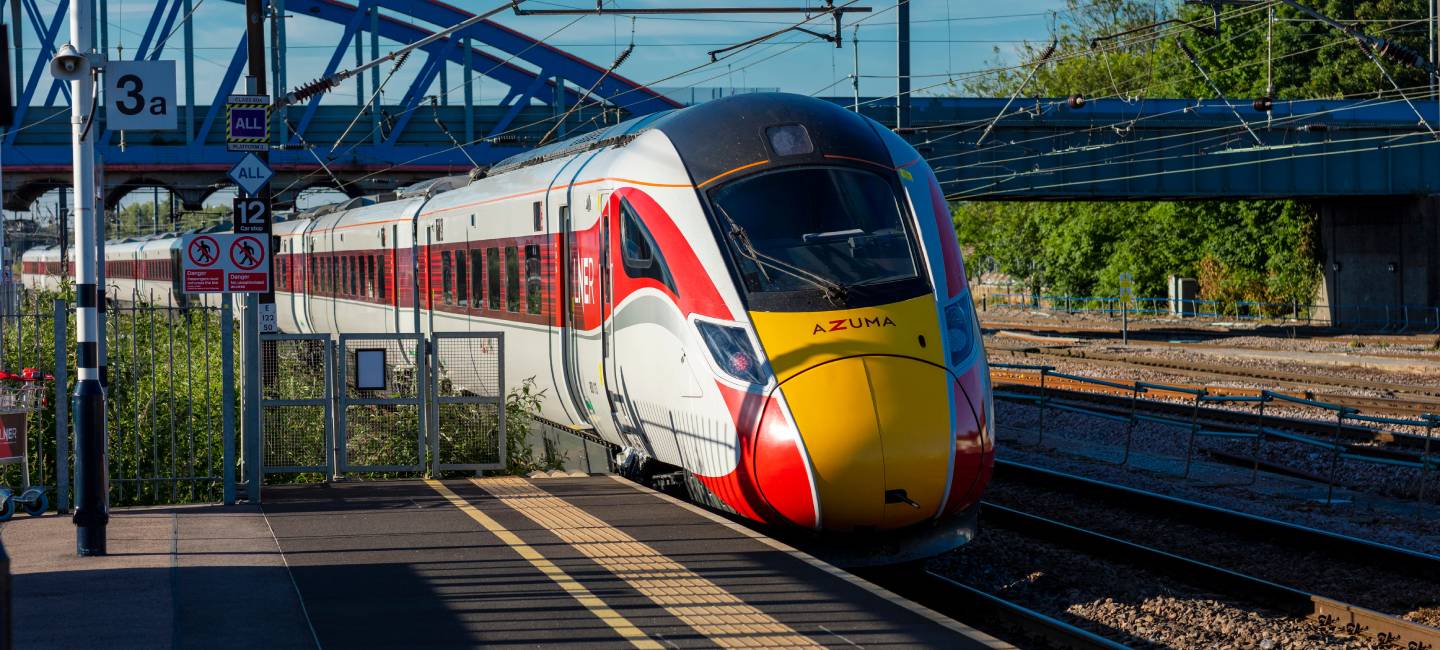
This article is for general guidance only and is not financial or professional advice. Any links are for your own information, and do not constitute any form of recommendation by Saga. You should not solely rely on this information to make any decisions, and consider seeking independent professional advice. All figures and information in this article are correct at the time of publishing, but laws, entitlements, tax treatments and allowances may change in the future.
UK train fares are sometimes said to be the most expensive in Europe – and they’re certainly not getting any cheaper. Rail fares in England and Wales went up on March 2, with regulated fares (just under half of all fares) going up by an average of 4.6%. In Scotland, rail fares are set to increase by 3.8% from April 1.
Meanwhile the price of most UK railcards – including the Senior Railcard – increased for the first time in a decade in March (from £30 to £35). But don’t let the squeeze stop you from doing the things you love, whether it’s exploring the countryside, taking a city break or visiting family and friends. Below, we explain the ways you can save on booking train tickets, so you can continue to enjoy your favourite activities all over the country.
What’s on this page?
There’s a whole range of railcards and they can get you cheaper travel. They cost £35 for a year (except for the Disabled Person’s Railcard, which is £20) and in some cases you can get a three-year railcard for £80. Your card entitles you to a third off rail fares, although morning peak travel is sometimes excluded.
So if you spend more than about £100 a year on train travel, the railcard is likely to save you money. If you browse railcards online, you’ll often be presented with additional offers, which might include savings on theatre tickets, Virgin Experience Days, or a free three-month Tastecard membership, which can get you two for one meals at a range of restaurants UK-wide (though the membership will auto-renew at a cost if you don’t cancel it after three months).
These offers may be worth checking out, though in many cases you can get similar offers elsewhere, or you can click through to get the offers without needing to actually purchase a railcard.
You can get this once you turn 60. According to the Senior Railcard website, cardholders save on average £96 a year and the card pays for itself after just three journeys. You can’t use it during morning peak in London and the south-east (the Network Railcard area) but you can use it at any time in the rest of the UK.
Did you know that if you use a hearing aid, you’re eligible for a Disabled Person’s Railcard? Check the Disabled Person’s Railcard website for details of eligibility, as there’s a wide range of evidence you can use to get a card – including a hearing aid prescription.
In many ways it’s better than a Senior Railcard, as you can use it to get a discount for another adult travelling with you, it’s valid during morning peak (even in London and the south-east) and it costs £20 rather than £35. You can also get a discount on Oyster pay-as-you-go fares in London.
The Two Together Railcard is for anyone over 16. You choose who you want your travel companion to be, and you each pay £35 for a one-year Two Together Railcard. This gets you both a third off fares as long as you travel together.
In some cases the card could pay for itself in one trip, so it’s worth considering if, for example, you’re going away with a friend for a weekend. You can have more than one Two Together railcard, if there’s more than one person you travel with enough to make the cost of it worthwhile. You can’t use the card during morning peak time before 930am.
This one is for anyone who travels in London and the south-east, and gets you a third off fares in the Network Railcard area. Bear in mind there’s a £13 minimum fare. According to the Network Railcard website, people with a Network Railcard save on average £138 per year, or £4.91 per journey.
If you have a Tesco Clubcard, you can save more money on a railcard by buying one using clubcard points. Every £2.50 in vouchers can be converted into £5.00 to use with a one-year Railcard (such as Senior Railcard or Two Together Railcard). You'll only need £17.50 in Clubcard vouchers to pay for the railcard in full.
Railcards are not valid in Northern Ireland, but if you’re over 65 and live in Northern Ireland you can get free train and bus travel throughout the island of Ireland with a SmartPass.

Split ticketing is a way to save money on train travel by breaking your journey up into multiple tickets, instead of buying a single ticket for the entire route. You still travel on the same train, but by purchasing separate tickets for different segments, you can often find a cheaper overall fare.
For example, if you're traveling from London to Edinburgh, buying one ticket from London to York and another from York to Edinburgh might be cheaper than a direct London-to-Edinburgh ticket – even though you stay on the same train. Split ticketing is not a new concept.
But doing it manually yourself can be quite time-consuming, especially if you’re not used to it. To do it manually, you check which stations the train stops at on your journey, and check the prices for different combinations of tickets between stations along the way to see if you can make savings.
You can split the journey into as many different legs as you want, as long you follow the rules below. To make it easier, a number of sites now offer split ticket train travel, including general ticketing sites such as TrainPal and The Trainline, as well as specialist sites such as SplitTicketing.com, Split My Fare, TicketySplit, and TrainSplit. Even National Rail now acknowledges split ticketing as a legitimate way to save.
Split ticketing websites charge fees based on a percentage of what you save. The exception is the TrainPal app, which does not charge fees (if you use its website instead, it charges 12% of what you save, up to £1.99).
Of course, there’s nothing to stop you using these sites to find cheaper fares and then using that information to book on a different website without fees – although if too many people do this, the split ticket sites may not be able to keep going.
The different split ticketing sites can return different results, so it can be worth checking more than one. For example, a TrainSplit Bristol to Leicester return fare was, at the time of writing, £46.63. The same ticket on another split ticket site was £54.39, while LNER and National Rail were selling direct fares for £63.80. But in some cases a different split ticket website might find a cheaper option.
TrainSplit’s director, Joe Sikking, says that split ticketing is completely above board – and that sites like TrainSplit only offer valid ticket combinations, so you don’t need to worry about checking the rules yourself. But there are some requirements for split ticketing to be valid that it’s important to know about:
Some split fares may require travel on specific trains, which might reduce flexibility in the times you can travel. If you have flexibility in your travel times, you'll often be able to save money with split tickets. Check whether your split tickets can be printed at the station or if electronic tickets on your phone are an option.
Sikking says: “Many over-50s travel off-peak, when split ticketing savings are often the highest. It makes long-distance travel much more affordable, perfect for visiting family or taking leisure trips.
“Split ticketing works for most UK train routes, but savings vary. Some journeys offer significant discounts, while others may have smaller reductions. Using a service like this removes the hassle of searching for split fares manually – it does all the work for you.”
With train tickets, book as early as you can – but check the terms and conditions as you may not be able to change your ticket later. According to Sikking, train operators typically release tickets up to 12 weeks before travel.
“These are usually the cheapest fares, and prices tend to rise as more tickets are sold. Booking early can result in significant savings, especially on popular routes,” he says. If the tickets you want aren’t on sale yet, you can use Trainline’s ticket alert service.
(You don’t have to book through Trainline, which charges fees, to use this service). You can also see which dates tickets are available from different train companies on the National Rail website.
If you have left it until the last minute, some train companies even let you buy cheaper advance tickets until the night before, or even on the day, so it’s always worth checking in case there’s a cheaper advance fare.
If you're looking for an even more budget-friendly option, or perhaps prefer a more direct route to your destination, consider coach travel. It's often significantly cheaper than trains. The journeys can take longer but in some cases may be more direct without requiring transfers.
You can book coach trips using websites such as National Express or FlixBus. FlixBus offers tickets starting at £4.49. And if you live in Scotland, are over 60 and have a National Entitlement Card (NEC), you can travel on the company’s Scottish coach network for free.
This means free travel on Scottish lines between Aberdeen, Aviemore, Dundee, Dunfermline, Edinburgh, Glasgow, Inverness, Livingston, Perth, Pitlochry, and Stirling. FlixBus UK’s managing director Andreas Schorling says that a suitcase and hand luggage are included as standard, while the company’s drivers are on hand to help with loading bags.
Like most trains, many coaches now offer wi-fi and charging points. “You’re always guaranteed a seat, with no risk of standing as you might be on a packed train,” says Schorling.



.jpg?la=en&h=354&w=616&hash=653168623B92F3457D40ACA115D37B3E)


From sales to cashback, here’s how to get more for your money online.

